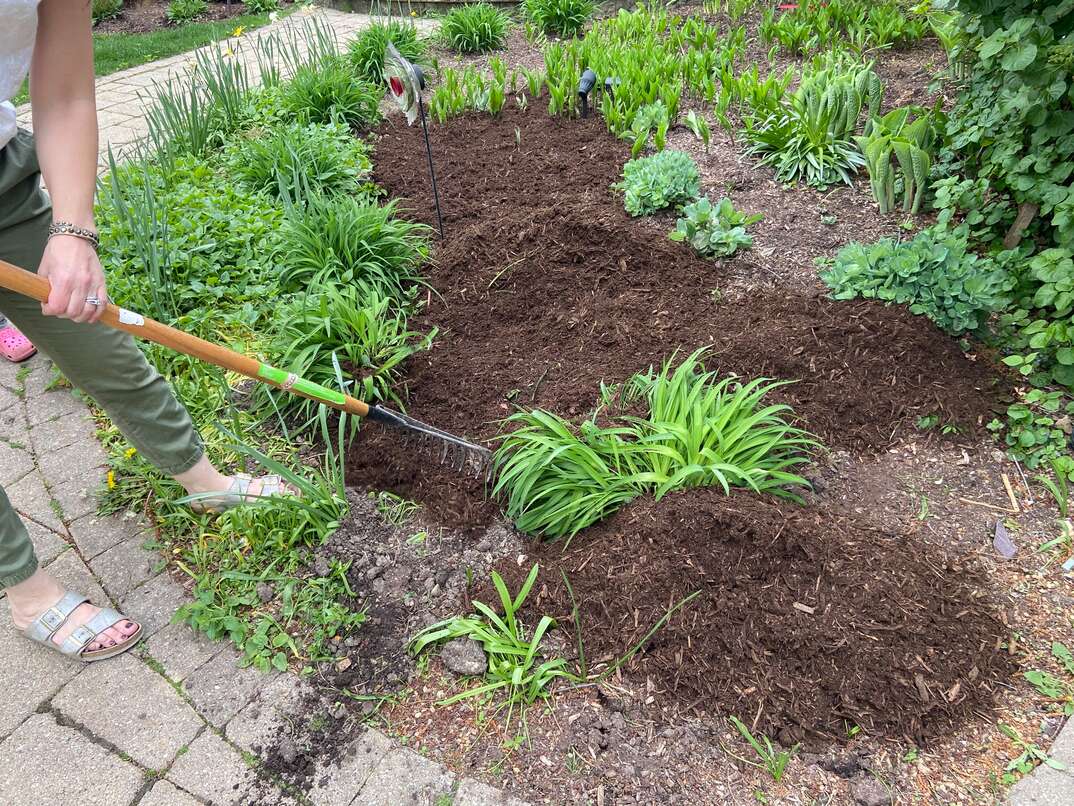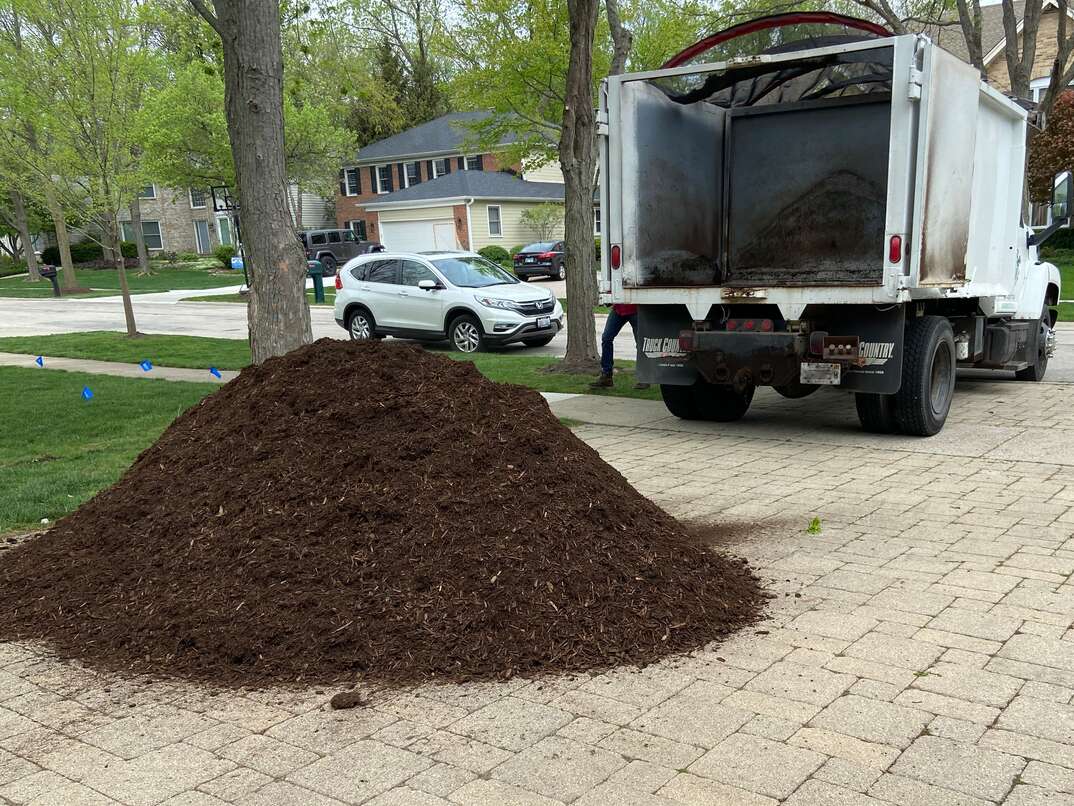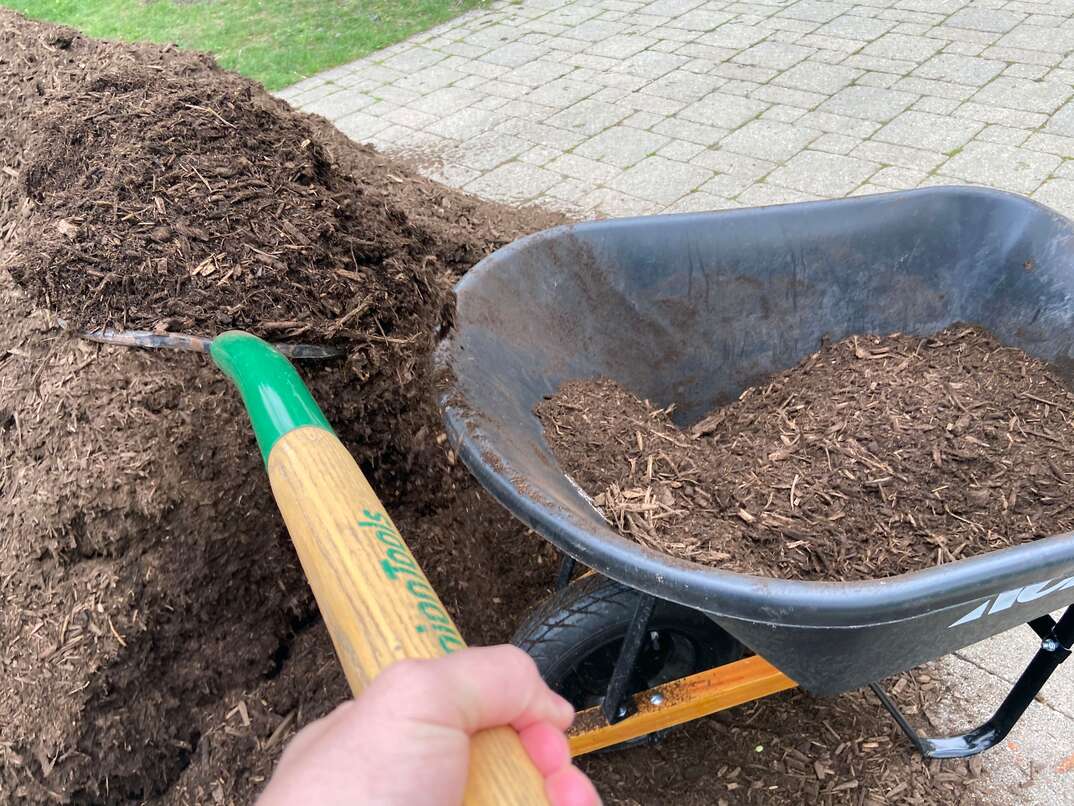How to Mulch Your Yard

A healthy yard needs regular TLC. Mulch provides a lot of the nutrients your lawn needs, and adding it should be a part of your regular outdoor maintenance plan. But how do you get the most benefit out of mulching?
This May Also Interest You: How Much Does Sod Cost to Install?
Read on to find out about the different types of mulch, where to get it, how to use it and the various benefits mulch brings to your yard and garden.
What Is Mulch?
So, what exactly is mulch? Simply put, it’s any material used to cover soil. Mulch comes in two types: organic and inorganic. Each serves a different purpose. Organic mulch is material like grass clippings, leaves, tree bark, wood chips and pine straw. Inorganic mulches include black plastic, rubber and geotextiles, commonly known as landscape fabrics. You can also use gravel, stones and river rock around your plants. However, these are mainly decorative and may only help prevent some weeds. In general, they don’t provide any of the benefits of the other mulch types mentioned here.
Both types of mulch discourage weeds, but organic mulch has other benefits like retaining moisture in the soil, helping with drainage and improving the soil’s nutrient-holding capacity. Mulch does not prevent pests.
 -------------------------------------------
-------------------------------------------
Where Do I Get Mulch?
You may be able to collect and utilize organic material already in your yard. Shred fallen leaves or chop up tree bark and sticks to create your own free-of-charge mulch. You can also use grass clippings.
Alternatively, you can buy bags of organic mulch from a gardening center or home improvement store. Usually, mulch is sold by the yard. One yard should cover 100 square feet if you layer your mulch 3 inches deep.
Think ahead about mulching when starting a vegetable garden. Straw or weed-free hay are great options here. It not only looks good; it helps retain soil moisture, prevents weeds, protects plant roots and, as it breaks down, adds organic matter to the soil. If you are just planting your flower or vegetable bed, now is the ideal time to mulch, as those organic nutrients will help the new plants grow. Only use organic mulch for new plants, and avoid wood-based ones.
Black plastic, shredded rubber, or landscape fabrics are excellent weed preventers. Black plastic also transmits the sun's heat to the soil, which is beneficial for vegetables that thrive in warmer conditions. Landscape fabrics, on the other hand, allow air and water to reach the soil while still preventing weeds. These fabrics do deteriorate over time, however. Covering them with organic mulch will make them last longer.
Neither black plastic nor landscape fabric should be used around shrubs. Black plastic also shouldn’t be used around trees or perennials, as it really doesn’t break down. Black plastic is good for plants such as strawberries or tomatoes and other vegetables that are replaced each year. At the end of the season, you should remove the black plastic from your vegetable garden.
 -------------------------------------------
-------------------------------------------
How Do You Mulch?
Mulching is super simple. If you are mulching your garden or flower beds, first get rid of any existing weeds and then smooth and level the space’s soil with a rake or by hand. Next, water thoroughly to keep the soil moist beneath the mulch. If you are using black plastic or landscape fabric, lay that down first. This gives you extra weed control. Then, layer your organic mulch over the plastic.
If you aren’t using landscape fabric, simply pile the mulch around the shrubs, flowers or plants. Do this carefully, as you don’t want to damage any stems. Leave a 1-inch space between your mulch and the tree, shrub or plant stem. You'll want a 4-inch layer of mulch, especially if its main purpose is to discourage weeds. If the area is shady, you can probably get away with a 2-inch mulch layer. If you want to mulch your vegetable beds before winter, lay down 4 to 6 inches of mulch. Don’t over-mulch – too much material will suffocate plant roots and kill your vegetables or flowers. Water the mulch when you are done, being careful not to overwater.
As black plastic and landscape fabric aren’t that attractive, you may want to use an organic mulch material for aesthetic purposes. Wood chips from a gardening center are a good option.
Mulching isn’t a one-time chore; it needs to be done every year, unless you've decided to use material such as shredded rubber, which can last a long time. The ideal mulching seasons are spring and autumn. Mulch is best applied when the soil is moist or when plants are just beginning to grow so its nutrients can infuse the soil.
More Related Articles:
- A Grassroots Effort: How to Lay Sod in 4 Steps
- Mow Money: Here’s How Much Lawn Care Services Cost
- How Much Does a Sprinkler System Cost?
- Basic Lawn Care and Maintenance Tips
- How Much Does It Cost to Build a Fence?
Mulching Your Yard
Do you bag your grass clippings and dispose of them? Don’t! Not only does it create more work for you, but all those bags of grass take up lots of space in landfills. Leaving your clippings on your cut grass brings a lot of free benefits. First, it’s a natural fertilizer — no chemicals are needed to provide nutrients to your lawn. Using grass clippings as mulch also keeps your lawn hydrated, which is especially important if you live in a warm climate or are suffering from drought.
If your grass is really long, you should bag some of your clippings. This is because using long grass blades as mulch gives your lawn a heavier cover that can create patches of unhealthy grass because the sun can’t reach it. A general rule of thumb is to use only grass clippings of 1 inch or shorter as mulch. Also, if you just planted your lawn from seed, it might not be sturdy enough to stand up to a layer of grass clippings.
Don’t forget your vegetable garden. Grass clippings work great here as a nitrogen-rich mulch.
What about thatch? Thatch is a layer of partially decomposed grass and plant parts like leaves and roots that rest between the soil and living grass. It should be raked up before mulching. You’ll know you have thatch if your grass is discolored, thin, weak or if there are dry patches.
There is a long-held myth that leaving clippings on your lawn causes thatch, though it’s not true. Today’s lawn mowers actually cut grass blades very thin, meaning they decompose quickly. Decomposing organic material is super healthy for soil. Your lawn will be infused with nutrients as the chopped blades decay. Go ahead and spread those clippings all over your yard and get ready to welcome a healthier lawn.
Mulching requires a small investment of your time in return for big yard and garden benefits. Using organic mulch means you’ll have a healthier yard, more beautiful flowers and tasty vegetables. Using an inorganic mulch adds a professional, finished look to your garden and yard. Either way, laying mulch will be an afternoon outdoors well spent.


